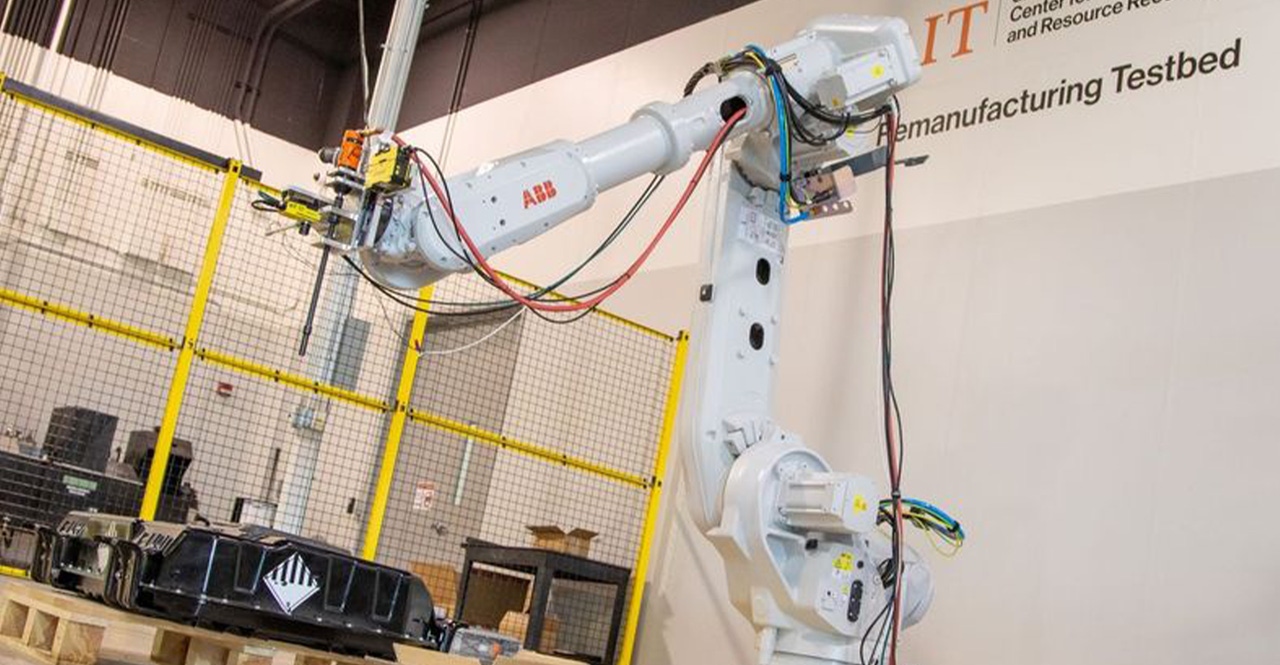Remanufacturing Makes Money for OEMs With a Bonus for Recyclers
Extracting and processing raw materials to make new products is enormously carbon-intensive; meanwhile only about 9 percent of the roughly 93 billion tons of minerals, metals, fossil fuels, and biomass used in manufacturing each year remains in circulation after a products’ first life ends, according to United Nations climate-related data.

Extracting and processing raw materials to make new products is enormously carbon-intensive; meanwhile only about 9 percent of the roughly 93 billion tons of minerals, metals, fossil fuels, and biomass used in manufacturing each year remains in circulation after a products’ first life ends, according to United Nations climate-related data.
But sectors from agriculture to automotive, health care, and aerospace are leaning into a robust industrial process to keep worn wares in use longer, restoring them to “like-new” or “better than-before” condition. The process, called remanufacturing, involves disassembling, cleaning, restoring, testing and validating products before rolling them to market.
Companies and government agencies are bringing back huge, high-ticket items like decommissioned aircraft and legacy robots, as well as cheaper goods like cell phones and toner cartridges.
Remanufacturing saves in equipment and production costs while preserving energy and resources and reducing waste. And while it depends on the product, on average producers cut consumers’ cost by 50 percent over buying new and reduce greenhouse gas emissions by 85 percent, according to Nabil Nasr, CEO of the REMADE Institute. REMADE is a consortium of manufacturers, universities, trade organizations, and labs that advance research and development of best practices in remanufacturing.
“Remanning” parts is a century-old concept. One of the first well-knowns to invest in the practice was Henry Ford who in the 1930s realized that rather than smelt valuable components in his auto engines he could rebuild them to meet the same specs as new engines while consuming less energy and materials. Ford set up and scaled operations solely dedicated to what was at the time a new concept.
Today, OEM’s the likes of Caterpillar, Cisco, and office retail giant Staples have established programs or whole divisions dedicated to selling certified remanufactured equipment. Midsized and small companies are getting into this niche, and now startups are popping up focusing solely on remanufacturing.
Today, the motor vehicle industry is reportedly the largest private sector remanufacturer in the world, with this specialized market estimated at $53.8 billion in 2020 and projected to reach $96.4 billion by 2027, according to the facilitators of remanufacturing trade show, Rematec.
But the Department of Defense is the heaviest investor in this money- and resource-saving practice, largely to keep outdated, exorbitantly costly infrastructure in use.
“We have weapon systems, aircraft, and ships that are not made anymore. To keep the existing ones in service we remanufacture them. It’s how we keep many aircraft –like the B-52 –flying,” Nasr says.
“We have remanufactured and reconfigured midsized ships for about five or six million dollars, where building a brand new one would cost about 60 million. So there are significant savings by using existing structures,” he says.
For years, the U.S. Marine Corps sought cost-effective ways to combat premature corrosion of shafts in light armored vehicles, an issue that has cost the military branch millions of dollars a year.
They pivoted to remanufacturing with a particular vehicle model whose shafts could not withstand the extreme heat and terrain conditions of the Middle East. Through a process involving spraying on a plastic protective coating, the Marine Corps realized a 95 percent cost reduction and extended the components’ life by 40 percent.
But many sectors are embracing remanufacturing, especially those with rapidly advancing systems where old assets are in need of upgrades, such as medical equipment. Blood sample analyzers and other sophisticated diagnostics are brought back years later but designed to perform with the speed and accuracy of newer equipment that’s since come online.
New trends keep evolving, with one centered around electronic vehicle batteries. Once they reach about 70 percent of capacity, they are no longer very effective for automotive applications, but the modules can be separated, repackaged, and put in new products.
Interest in robotics and automation is growing too, and not just to remanufacture old robots, but to support the remanufacturing process itself. It typically involves labor-intensive manual work. Robots are beginning to assist in disassembly and in putting products together faster. And automation supports inspections.
REMADE focuses on four energy-intensive material types: metals, including steel and aluminum; polymers, including plastics; fibers, including papers and textiles; and electronic scrap
The work is not as advanced with some of these material categories, such as textiles. While sometimes carpeting is cleaned from contaminants, recolored, and reintroduced as remanufactured carpet units, in general with textiles recycling is more common than remanufacturing because restoring worn fabrics to new condition is extremely hard. Grinding the material and recycling it into another product is easier.
Electronics remain a challenge. But recognizing the value of these materials and global demand fueled by the scarcity of critical minerals, REMADE is focusing on this market niche.
Unlike with mechanical components where most parts can be disassembled, embedded electronics are hard to access, and the boards are not designed to last long.
“Electronic modules have to meet the same performance standards and have the same lifecycle and reliability as a brand-new product. So how do you test them to ensure they will meet standards?” Nasr says.
This is among research focus areas of REMADE, in partnership with Rochester Institute of Technology’s Center for Remanufacturing and Resource Recovery, where scientists do prognostics to understand electronic modules’ health and remaining lifespan.
Nasr refers to remanufacturing as the gateway to proper recycling because disassembled parts and separated materials that are not needed for remanufacturing can be sent to recyclers.
“It’s a great way for us to address challenges with mixed materials and not have to send them for disposal. We can ensure separation is done properly, and that materials are clean, saving processors money and simplifying their process,” he says.
“Companies can make money separating aluminum from steel and some plastics, so they do it. It’s a good business, and companies [that remanufacture] are typically environmentally conscious. They want to do the right thing.”
About the Author
You May Also Like




